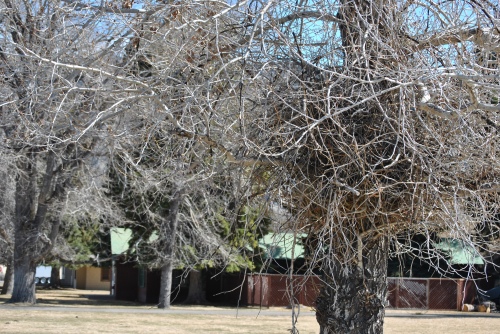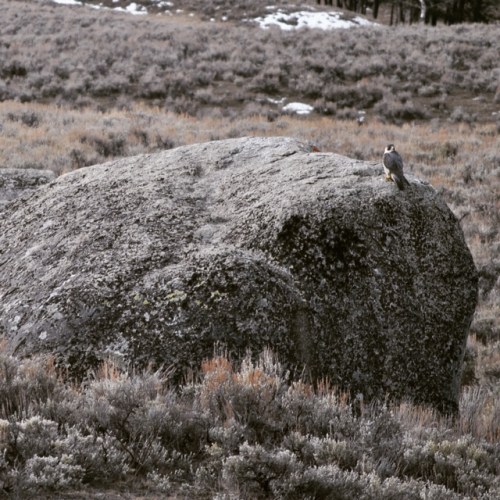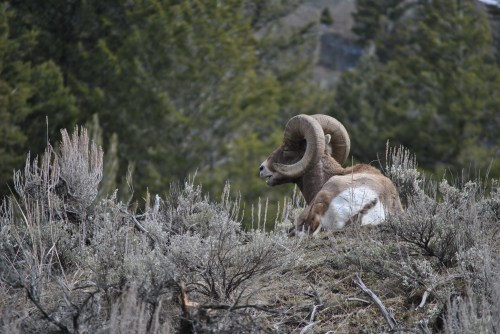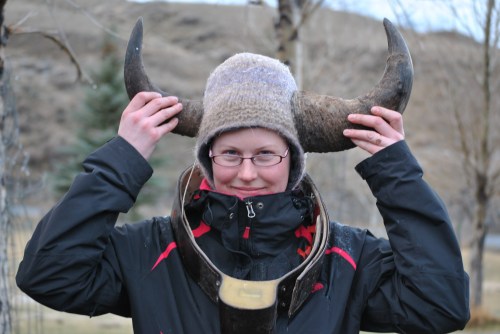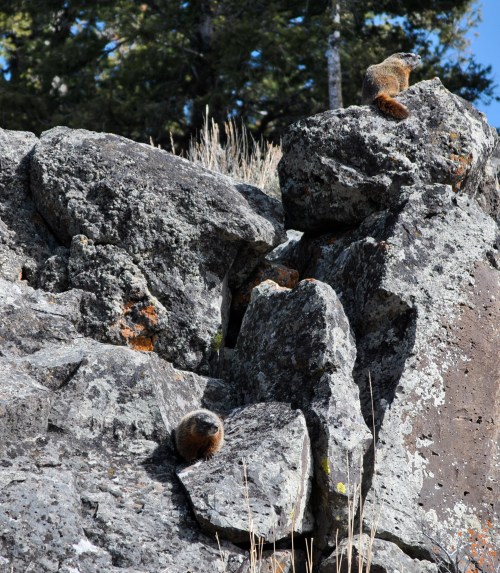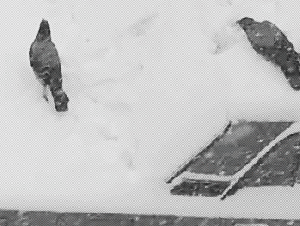Full disclosure: I am not actually going to be able to tell you the answer to this question. But I am going to get you closer than we have ever been before. At least by my standards. So now the question is where to begin…
Let’s begin by acknowledging that death means something to crows in a way that it doesn’t seem to mean something to most other animals, at least as far as we’ve recognized. What I mean by this is that crows don’t ignore their dead, they don’t reflexively flee from their dead, and they don’t just go about carrying out undertaking behaviors without a second thought (or a first thought). They really see their dead and they respond in a variety of ways. In my previous research, I found that generally, they respond to unfamiliar dead crows by alarm calling, followed by recruitment of other crows to the area to form a raucous group called a mob. Then they disperse after about 15-30min.

I’ve found that they do other things as well, like touching the bodies, though this really only happens in the spring. When they touch them they might gently nudge, peck or even copulate with the crows, though that latter one is exceedingly rare.
Other people have seen more curious things though. Upon listening to my garbled explanation of my studies, my dental hygienist removed her hand from my mouth and proceed to explain, with detectable urgency, that she knew about these funerals. That when she was a little girl living on her family’s farm her father shot a crow. Instead of leaving, the others brought sticks and dropped them on their dead flockmate. She’d never forgotten it.
What these stories tell me is that how crows respond to death is complex, and we are still far from fully understanding all their behaviors. And one of the hardest parts of this is that we can’t ask crows what they are doing. Why did you leave a stick that one time? Why did you rip up the body that other time? Why did you call for 30min minutes until your voice choked out, while your neighbors a quarter mile away looked later at the same body and then left in silence to return to the dumpster?
This barrier means that we stand a high chance of either under or over-interpreting their behaviors around death; for example, being unable to accept that we might experience the grief of death uniquely, or being unable to accept that we, in fact, do not. This is the challenge in studying how another organism responds to death, and it’s one I grapple with constantly.
There might, however, be one secret weapon into deeper parts of how crows respond to their dead that we can reach without needing a Dr. Doolittle-esque translator: their brains. While all animals only have a certain number of ways they can outwardly express themselves, how the brain responds to stimuli can tell you a great deal more about what an animal might be thinking. Which brings us to my newest paper.1
Now before I go on, I’m going to say up front that I suspect this current study might not sit well with some of my readers. Until now all of my studies have used wild crows and did not require the handling of birds or any kind of direct manipulation. Spying on the brains of animals, however, is not so hands-off. It almost always requires surgery. And it’s almost always lethal. I say almost, because sometimes we can actually learn quite a lot without opening up an animal. Without slicing up its brain. Without keeping it captive forever. This is one of those times.
Most people are familiar in some capacity with functional neuroimaging, especially fMRI. It’s a way to look at how the brain responds to different stimuli without needing surgery or euthanasia. fMRI works by tracking blood flow while an awake subject encounters a stimulus. It’s how we have uncovered that psychopaths don’t experience empathy when picturing others in pain, or that some dogs value praise from their owners more than food.2,3 Using fMRI in a non-human animal requires a great deal of training, however because fMRIs are big weird noisy machines that would be objectively terrifying for the uninitiated. Which means that they would never work with a wild crow. So instead, our team used a different kind of non-invasive imaging technique to spy on the minds of crows: FDG-PET.
Unlike fMRI which tracks real-time blood flow, FDG-PET tracks metabolic activity and most importantly it can do so retroactively. The FDG in FDG-PET, stands for fluorodeoxyglucose, which is a modified glucose molecule with a radioactive tracer attached to it. It’s the same stuff we give humans when we’re going to PET image them for, say, a tumor. The modified part is that unlike most glucose, this stuff doesn’t break down, it gets stuck wherever the body used it up. The tracer on the other hand, does wash out. Still, for a brief window of time-about 20 minutes after injection-we can stimulate an awake animal in a variety of way, visually, acoustically, etc., and the brain will use up the glucose (FDG) in order to process that information. The animal can then be anesthetized and placed into a PET machine where, via a mechanism involving photons and gamma rays that was far too complex for me to bother retaining beyond my graduate exams, the machine can detect the tracer. The imaging process takes about 20min, after which the bird wakes up, none the wiser for the invasion of privacy.

After a lot of image processing and analysis, we can then infer how active a particular area of the brain was while experiencing one stimulus relative to a control. So while there are some advantages to an fMRI approach, FDG-PET is the only mechanism that allows us to see how a crow’s brain was responding while it was awake and unconstrained 20min ago, instead of while it is strapped down in a big scary scanner. At the conclusion of the study, each subject is banded and released. Although our study used only a modest 7 subjects (which is a normal sample size in the imaging world) it brings me great pride to report that, not only did all of our subjects survive, but all left our care with better or equivalent body condition than they came in with. Some of them have even been resighted successfully breeding in a subsequent season. Again, when it comes to spying on animal brains, this is the exception, not the rule.

So now that some of the technical details are out of the way let’s get down to brass tacks and talk about what we actually learned from all this. Our lab has previously used this method to understand what neural circuits process different faces, like familiar friendly or dangerous faces, as well as how crows perceive different kinds of threats. But on the heels of my fieldwork looking at their responses to dead crows, we wanted to know more about what was going on in their brains. So we had a two stimulus paradigm: a visual one where we compared brain activity between when crows saw a dead, unfamiliar crow, and a dead, unfamiliar, song sparrow (the control), and an auditory one, where we played them recordings of wild, unfamiliar crows reacting to dead crows, and unfamiliar crows begging (the control).
To aid with our analysis we selected 5 particular brain areas a priori, which means before the study, to examine for brain activity. These sites included the hippocampus and striatum, which are responsible for fear and spatial learning, the septum and amgydala, which aid with social behaviors, conspecific recognition and affect, and the NCL or nidopallium caudolaterale, which is responsible for executive decision making like our prefrontal cortex.
Among the visual paradigm, what we found was that between the threatening (dead crow) and control groups (dead song sparrow and responses from three birds in a previous study that saw only an empty room) there weren’t a ton of differences in relative brain activity. Crows that saw a dead crow didn’t show more activity in the regions associated with affect, social behaviors or fear learning. Instead, what we found is that, like when they see a familiar threat like a hawk, it’s their executive center that shows the most difference.4 At first this was a surprise, but given the number of ways they can respond to their dead, and possibly because they didn’t know this bird, it makes sense that they might be wondering exactly what they should do in that moment. In case you are tempted to think that might be what’s going anytime they’re in this strange situation, know that a previous study using the same approach found very different neurological responses to when they see familiar threats, new threats, and friendly people.4 So there’s no reason to suspect that the protocol alone is what was responsible for NCL activity.
With respect to the auditory tests, we detected even fewer differences. The most notable finding was that both kinds of calls, alarm and begging, stimulated NCL activity relative to the birds that saw only an empty room. I can’t pretend to know exactly what this means. But it does bode well for my idea that crow communication is quite complex and context dependent, therefore requiring a great deal of brain power to decipher and interpret. But I speculate.
So, as I said, while this study in no way provided definitive answers to, “What are crows thinking when they see death?,” it’s gotten us as close as we have ever come and given us some good ideas for what might be going on. But as with all science, the first study is the one warranting most skepticism. I have no doubt we will continue to learn much more in future and I can’t wait to see where this study fits into the vast field of knowledge that awaits us.
If you would like to read this study in its entirety (which is full of extra details, analysis, and explanation) check out this link, which will remain active until April 15th, 2020. After that, shoot me an email if you want the PDF, I am more than happy to pass it along. If you would like to read the popular science article from the Audubon where many of these photos were sourced, but that came out before this study was released, follow this link.
Literature cited
1. Swift KN, MarzlufF JM, Tempteton CN, Shimizu T, and Cross DJ. (2020). Brain activity underlying American crow processing of encounters with dead conspecifics. Behavioural Brain Research 385: https://doi.org/10.1016/j.bbr.2020.11254
2. Decety J, Chen C, Harenski C, Kiehl K. (2013). An fMRI study of affective perspective taking in individuals with psychopathy: imagining another in pain does not evoke empathy. Frontiers in Human Neuroscience: https://doi.org/10.3389/fnhum.2013.00489
3. Cook PF, Prichard A, Spivak M, Berns G. (2016). Awake canine fMRI predicts dogs’ preference for praise vs. food. Social Cognitive and Affective Neuroscience 11: 1853-1862
4. Cross DJ, Marzluff JM, Palmquist I, Minoshima S, Shimizu T, Miyaoke R. (2013). Distinct neural circuits underlie assessment of a diversity of natural dangers by American crows, Proc R SocB 280: 1–8





















